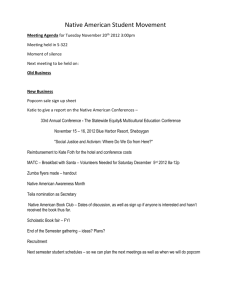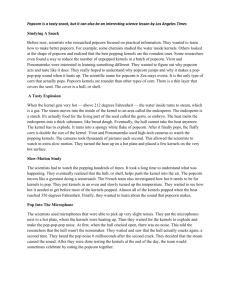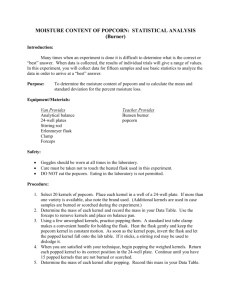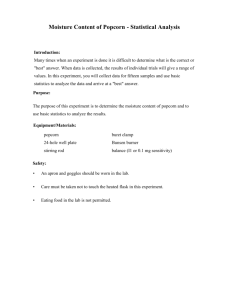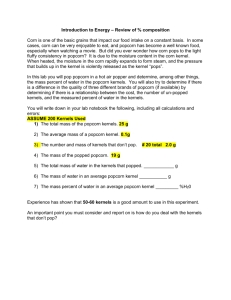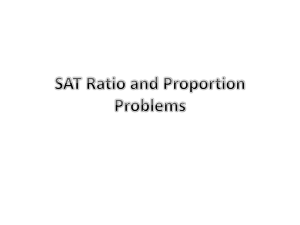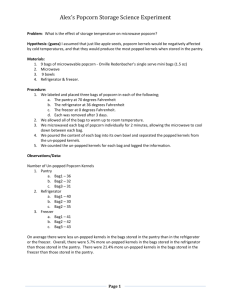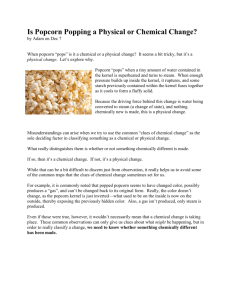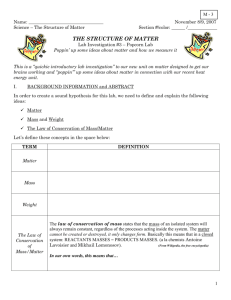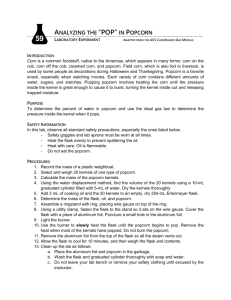Popcorn Lab
advertisement
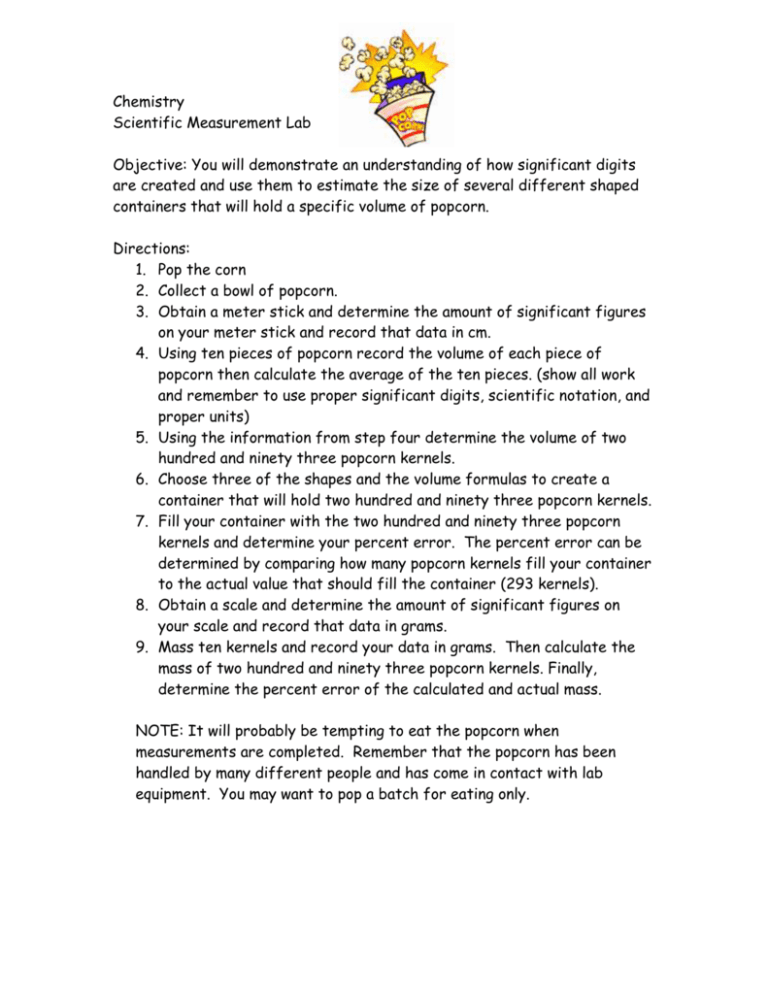
Chemistry Scientific Measurement Lab Objective: You will demonstrate an understanding of how significant digits are created and use them to estimate the size of several different shaped containers that will hold a specific volume of popcorn. Directions: 1. Pop the corn 2. Collect a bowl of popcorn. 3. Obtain a meter stick and determine the amount of significant figures on your meter stick and record that data in cm. 4. Using ten pieces of popcorn record the volume of each piece of popcorn then calculate the average of the ten pieces. (show all work and remember to use proper significant digits, scientific notation, and proper units) 5. Using the information from step four determine the volume of two hundred and ninety three popcorn kernels. 6. Choose three of the shapes and the volume formulas to create a container that will hold two hundred and ninety three popcorn kernels. 7. Fill your container with the two hundred and ninety three popcorn kernels and determine your percent error. The percent error can be determined by comparing how many popcorn kernels fill your container to the actual value that should fill the container (293 kernels). 8. Obtain a scale and determine the amount of significant figures on your scale and record that data in grams. 9. Mass ten kernels and record your data in grams. Then calculate the mass of two hundred and ninety three popcorn kernels. Finally, determine the percent error of the calculated and actual mass. NOTE: It will probably be tempting to eat the popcorn when measurements are completed. Remember that the popcorn has been handled by many different people and has come in contact with lab equipment. You may want to pop a batch for eating only. Data: 1. Significant digits on meter stick = ______________ 2. Calculations for volume of popcorn and average volume of popcorn. a. b. c. d. e. f. g. h. i. j. Total volume =_________ divided by 10 = _________ average 3. Calculation for container one. 4. Calculations for container two. 5. Calculations for container three. 6. Percent error for container 7. Mass of ten kernels = _____________ 8. Average mass of ten kernels = ______________ 9. Estimated mass of 293 kernels = ____________ 10. Total mass of 293 kernels = ________________ 11. Percent error of kernels = _________________ Analysis: 1. Why are significant digits important to scientific measurement? 2. How can estimations be helpful to scientists? 3. Why are calculations for percent error useful to scientific studies? 4. How does this experiment compare to the expanded mole diagram? Formulas: Percent Error = actual – calculated x 100 calculated
